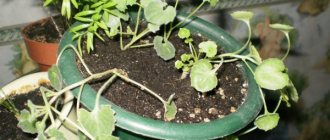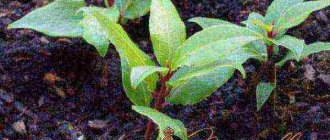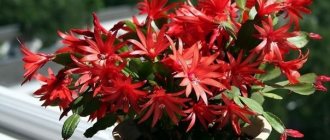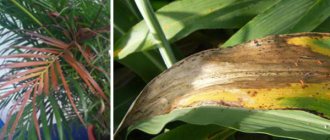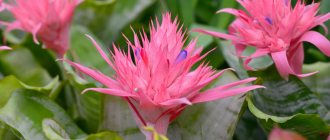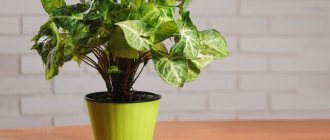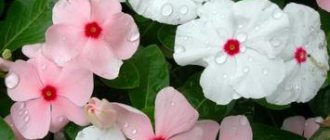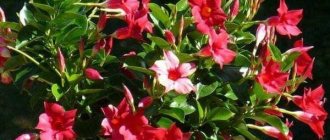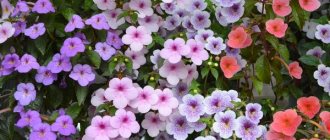There are many indoor plants in the world that have migrated to window sills from the tropical countries of America and Asia. So Peperomia obtufolia is loved for its lush green spaces of various shapes, sizes and colors. It is important to know how to care for it so that it always delights with its evergreen appearance.
Description of Peperomia obtufolia
This representative of the flora belongs to the perennial evergreen herbaceous plants of the pepper family. Peperomia obtufolia has a wide variety of leaves - leathery, wrinkled, thin, shiny, with stripes, stains, spots, and so on. Such colorful beauty in nature can be seen right on tree trunks, in dense peat forests and even on rocks.
The variety of species and unpretentiousness of this plant is striking, which became the basis for growing it at home. Erect, bush-like, ampelous species - all of them have found themselves in interior design, and thanks to their slow growth, in compositions. The plant reaches a height of 15-50 cm, but this figure can be changed at your discretion by cutting and shaping its crown.
How does Peperomia obtufolia bloom?
Peperomia obtufolia has flowers, and they appear on the plant in the warm season - spring and summer. They do not differ in particular decorativeness and exterior. These are the so-called spike inflorescences, which rise above the leaves and can have a variety of types. As the fruits form, small dryish berries ripen on their surface, easily separated when touched.
Peperomia bluntifolia - poisonous or not?
Those who are wondering whether it is possible to keep Peperomia obtufolia at home should answer that it is possible. There is no information in scientific sources about a possible danger to human health. It is absolutely non-toxic and this applies to all parts of the plant - leaves, trunk, roots and flowers. You can perform care manipulations without gloves, but in any case, make sure that the soil and parts of the plant do not come into contact with open wounds on the skin and cuts.
Top dressing
There is a fertilizer designed specifically for peppers, but it can only be purchased in specialized stores or online. As an alternative, fertilizer for ornamental foliage plants, as well as a universal complex fertilizer, is perfect for peperomia. It should be fed all year round. In the warm season about once every 20 days, in the cold season once a month. Check the exact dosage in the instructions for the fertilizer or from the seller.
This may be interesting: Shy Mimosa - caring for impatiens
Pot for Peperomia obtufolia
Today there are a variety of flower pots on sale - narrow and tall, wide and low. The material used to make them is also varied. It is important to understand how to choose one so that peperomia obtufolia feels at home the same as in natural conditions. Considering that it grows in open areas, without going too deep into the ground, you should choose an appropriate pot - wide, but not deep.
The manufacturing material can be anything, but it is better to focus on natural varieties - stone, granite, clay. Peperomia obtufolia will feel comfortable and comfortable in such a container, because it does not interfere with normal air exchange, and this is an extremely necessary condition for the health of the roots. Plastic dishes can also become a place for a permanent refuge, but then you should take a closer look at the health of your green pet.
Soil for peperomia obtufolia
In nature, the plant chooses loose, peaty soils, so you should use an appropriate substrate, or you can make it yourself. Peperomia dullifolia will appreciate soil consisting of leaf humus, peat, manure and coarse river sand, taken in a ratio of 2:1:1:1. Alternatively, you can mix peat, sand and leaf soil in equal parts. If this is not possible, it is worth purchasing a store-bought mixture for decorative foliage crops, which contains everything necessary for the growth and development of the flower.
Peperomia obtufolia - home care
It is easy to care for Peperomia obtufolia at home. As already mentioned, this plant is unpretentious, for which it has received the favor of lovers around the world. In general, you must adhere to the rules regarding:
- Ambient air temperatures
. Peperomia obtufolia care implies that it is as close as possible to the growing conditions of the flower in nature. This plant is tropical and loves warmth, so the air temperature should always be maintained at +20-30°C. - Illumination
. In the shade, under the forest canopy, on the northern side of the rocks, the flower feels most comfortable. Peperomia dullifolia likes dim lighting, but does not tolerate outright darkness. As a result, the color on the leaves begins to fade and disappear. It is better to place the pot on a western or eastern window. - Humidity
. In the tropics it often rains, saturating the succulent leaves with moisture. It is good if the owner often sprays the plant with a spray bottle in the warm season or wipes the plates with a wet cloth.
Pruning peperomia obtufolia
The crown of the plant must be formed, especially if its leaves are dense, large and heavy. If this is not done, they may fall under their own weight or wander outside the pot in a manner that only they understand. Peperomia obtufolia provides for crown formation when the shoots reach a height of 20 cm or more. However, if the owner has some kind of vision, he can start doing this earlier.
The cutting line must be made at a height of 3-4 cm from the ground level, while the three lower leaves must remain intact. Such a stump will give rise to young shoots. As new shoots appear, they can also be pinched or trimmed, thereby forming a dense, low standard plant. Do not throw away cut shoots. They can be rooted into the ground in the same pot to increase the splendor and density of the crown.
Watering peperomia obtufolia
Those who are interested in how to care for Peperomia obtufolia should answer that watering the plant deserves special attention. The tropics, with their warm, humid climate, place their own demands on this aspect of care. In no case should the substrate be allowed to dry out, so in the summer the flower is watered 1-2 times a week, and with the arrival of cold weather the amount of moisture it receives is somewhat reduced. However, excessive waterlogging is also undesirable. This can lead to root rot and the development of all kinds of fungal diseases.
Peperomia obtufolia - what to do with the mustache?
A novice gardener may not immediately understand that the plant is blooming. The small whitish wriggling cobs that appear at the ends of the stems bear little resemblance to the inflorescences that are familiar to everyone, so many people think about what to do with them, especially if they are present on Peperomia obtufolia almost all year round. Nothing bad will happen if you get rid of them, because from time to time the crown needs to be trimmed and there is no way to do without it. Peperomia obtufolia is a flower that subsequently bears fruit, and if you want to wait for this moment, then you should not trim the mustache.
Features of agricultural technology
It is considered an unpretentious flower. To preserve decorativeness, it is recommended to adhere to a number of rules. All types of peperomia are kept under the same conditions.
- Lighting and location. The best option is the western or eastern side. Keep out the sun. On the south side they are shaded with tulle or placed at a distance from the window. Species with dark leaves grow well in partial shade. Variegated varieties prefer bright but diffuse lighting. They are illuminated with fluorescent lamps. Caring for peperomia of variegated varieties is more difficult in this regard.
- Temperature. There is no rest period. Does not require special temperature conditions. The plant is kept at room temperature 18-22 °C all year round. Does not like cold and drafts. In winter, remove it from the window or place a sheet of foam under the pot. Do not take it outside or onto the balcony even in warm weather.
- Watering. In spring and summer, peperomia needs abundant watering. In autumn and winter, the frequency of watering is reduced. Water as the soil dries, maintaining stable humidity, but without waterlogging. Tap water is allowed to settle for two days. If possible, use soft water.
- Humidity. It tolerates dry apartment air calmly, but responds gratefully to periodic spraying.
- Feeding. Fertilize all year round. Use any complex preparations for deciduous plants. The concentration is reduced by 2 times. In the warm season, the frequency of fertilizing is every two weeks, in the cold season - monthly.
- The soil. The optimal soil for peperomia is loose, light, and well-permeable to water. For 2 parts of leaf soil take 1 part of peat, humus and sand. The addition of soaked hydrogel granules is encouraged.
- Transfer. The first three years are held every April. As you get older, the frequency of transplants is reduced. It is enough to replant adult peperomia once every 2-3 years. A drainage layer up to 5 cm thick is poured into the new pot.
Advice! Peperomia grows best in small, wide pots. Each time, take a pot 1.5 times larger than the old one.
Reproduction of Peperomia obtufolia
You can increase the number of plants in several ways:
- Dividing the bush
. The simplest method involves dividing the plant into several segments. Each of them can be planted in a separate pot. - By cuttings
. The planned formation of the crown can be combined with propagation by placing the cut cuttings in water or deepening them directly into the ground, not forgetting to sprinkle the cut area with Kornevin. - Seeds
. Those who ask how peperomia obtufolia reproduces should answer that this is the most difficult and time-consuming method. Purchased seeds should be pickled in a manganese solution and placed in containers filled with sand and leaf humus. Cover with a centimeter layer of soil, moisten, cover with cling film and place in a warm and bright place. Ventilate and water periodically, and when the seedlings have a second leaf, they can be transferred to a permanent place of residence in a separate pot.
Succulent species
Peperomia dolabriformis
A real succulent with very original leaves. They resemble circles folded in half. There are points at the tips. They are attached to a thick trunk, forming a star-shaped rosette. The leaves reach a length of 7 cm, and a width of about 2 cm. A dark green border is formed at the places where the leaves grow together.
The stems are erect, with few branches, reaching a height of 60 cm. But unlike many relatives, it blooms quite gracefully, producing branched inflorescences with small white-greenish flowers.
Peperomia chisel
Peperomia columella (Peperomia columella) - Column
A very interesting species, striking in the uniqueness of its leaves. Many emerald-colored leaves, similar to dragon scales, densely cover the stem. It grows only 20 cm in height, so it is better to plant the flower in groups. When they reach a certain age, the stems begin to bend in an arched manner, and then they can be planted in pots and used as an hanging plant.
Peperomia columella
Peperomia ferreyrae
A striking representative of epiphytic succulent plants. All the beauty lies in the bright green leaves. They seem to have fused in the middle, and the place of this fusion is highlighted in a darker green color. The height of the plant does not exceed 30 cm, and the leaves can grow up to 7-8 cm in length. Since they contain a large amount of moisture, they are very elastic and thick in appearance. The plant loves moist soil, but does not tolerate stagnant water. Be sure to drain excess water from the pan. If the leaves are heavily dusted, you can make a small tropical rain from the shower with warm water, while being careful not to flood the soil substrate.
Peperomia Ferreira
Peperomia graveolens
The modest tropical beauty is one of the succulent species of Peperomia. All the beauty is in the leaves of this plant. Nature has colored them quite bizarrely. The leaves are light green above and ruby or burgundy below. The leaves curl in an arc towards the most upright burgundy trunk. The whole appearance of the plant resembles sea coral, especially when the soil is covered with small sea pebbles. It grows as a small bush, up to 25 cm high. It blooms modestly, with long spikelets with light yellow flowers on long burgundy peduncles.
Peperomia graveolens
Peperomia verticillata
A perennial herbaceous plant, evergreen, with ampelous shoots drooping downwards. It has fleshy leaves of a grayish-green color. The whorled form of leaf attachment gives it its corresponding name. This variety is best propagated by cuttings. During the formation of the crown, you can set aside the cut tops for later rooting.
Peperomia whorled
Peperomia obtufolia - why do the leaves turn yellow?
As a rule, this happens due to improper care. Although it is unpretentious - peperomia is blunt-leaved, brown spots on the leaves, their yellowing, and wilting are often associated with insufficient moisture in the soil and green shoots. If the substrate dries out once, this will immediately affect the appearance of the flower. It is necessary to provide him with emergency resuscitation care by placing the pot in a container of water for several hours, and then vigilantly monitor this aspect of care, watering and spraying the plant in a timely manner.
Difficulties in growing
The plant can get sick if the basic conditions are not met.
The main problems of peperomia:
- blackening of the leaves occurs during a sharp cold snap;
- wrinkling of the leaf plate may appear from sunburn;
- limp leaves are a symptom of rotting or fungal infection;
- dropping leaves indicates dry air and lack of moisture.
Peperomia can also be attacked by some pests:
- Spider mites manifest themselves as a fibrous whitish coating. After the destruction of adult individuals, the foliage is treated with Actofit, Sunmite or Vermitek.
- The appearance of thrips is indicated by dry spots on the leaves and a silvery tint to the leaf. For wrestling use “Aktara”, “Mospilan”, “Karate” according to the instructions.
- The mealybug is noticeable on the lower part of the leaf, where a kind of “flour” and sticky secretion is formed. After mechanical cleaning, it is necessary to treat the plant with the preparations “Rogor”, “Phosfamide”, “Aktara”, etc.
The variety of varieties and colors allows you to choose magnolia-leaved peperomia to suit your taste, and caring for it is not difficult. A compact and useful indoor plant suitable for every home.
Why doesn't Peperomia obtufolia grow?
Don't expect any quick changes here. As already mentioned, the Peperomia obtufolia plant develops very slowly. This is a normal state for her, so don’t worry too much. If the leaves do not lose their juiciness and color, remain alive and shiny, then there is no cause for concern. You can look for its advantages in this, because such a feature is welcomed where Peperomia obtufolia is part of a large ensemble, a varied composition, the appearance of which the owner would like to preserve for a long time.
Peperomia signs for home
According to the teachings of the ancients, the plant is capable of bringing exclusively positive energy into the house.
At the same time, those species that produce a negative biofield can:
- leaves have an oval or round shape;
- the tips are pointed or spiny.
In fact, this can be considered as a description of the plant Peperomia corrugata.
From this side, the plant is rightfully considered ideal for its living space. Location also plays an important role.
Help: the optimal solution is considered to be to place the plant in the corner of the apartment, since it is the maximum concentration of negative energy that is observed, which provokes quarrels and scandals between loved ones.
If we consider it from the side of Feng Shui, then it can significantly reduce the level of scandals and quarrels and eliminate contradictions. Its owners can quickly learn to be tolerant and balanced. Often compared to a money tree.
Its element is metal, which is why Japanese healers recommend choosing a location in the center of the room, where it will always be visible.
According to legend: if such a flower is in the house, then with a high probability complete idyll and goodwill will reign in it.
Diseases and pests of Peperomia obtufolia
Like any houseplant grown outside its native range, it is susceptible to a variety of ailments. Among them it is worth highlighting:
- Attack of pests
- spider mites, thrips, mealybugs and others. If any of them are detected, the plant should be treated with an insecticide, for example, Antiklesch and Fufanon and transplanted into a new substrate. In the future, follow the rules of care, because many of these insects are found where an ideal environment for this is created, for example, increased dryness of the substrate. - Root collar rot
. Peperomia dullifolia tolerates diseases with difficulty, reacting by slowing growth, withering of the above-ground parts, and changing the color of leaves when the roots rot. It is necessary to remove the plant from the pot, remove all dead areas, and treat it with a fungicide to combat putrefactive diseases, for example, Discor or Fitosporin-M. Afterwards, sprinkle the cut areas with activated carbon and transplant into a new substrate, normalizing the watering regime. - Chlorosis
. It causes the color of the leaves to fade. It occurs due to hard water and iron deficiency, so it is necessary to soften the water and enrich it with the mineral.
Features of caring for different varieties
Regardless of the variety, peperomia is afraid of direct sunlight. But there must be lighting to maintain the rich green colors of this beauty. Watering needs to be moderate; excess moisture is detrimental to both roots and foliage. The optimal temperature for exotics is no higher than 23 °C. In winter, no higher than 20 °C. The flower has no dormant period; it pleases with its decorative effect throughout all seasons. The soil for it should be loose and well-drained.
Important! Peperomia grows very slowly, so it does not need frequent replanting. Other care features depend on the characteristics of appearance and growth method
Other features of care depend on the characteristics of appearance and method of growth.
- The pubescent surface of greenery, velvet varieties are sprayed only during the growing season: from March to July. This, for example, applies to home care for Peperomia corrugata.
- Varieties with delicate thin leaves, like Peperomia Colombiana, need high humidity and frequent spraying.
- Succulent and fleshy leaves need moderate watering, as they are prone to rotting if there is too much moisture.
- Peperomia varieties with dense, tough and even hard foliage do not tolerate drying out of the substrate.
- Creeping and hanging varieties respond well to pruning shoots. After this procedure, active growth and an increase in greenery are noticeable. This method of growth stimulation is suitable only for young plants.
- Ampelous varieties grow well in hydroponics.
- Varieties with dark green foliage should grow in northern windows.
- The bright color of the foliage needs more intense lighting and a long daylight hours of at least 12 hours.
- Ampelous varieties reproduce well by dividing the bush.
- Bush varieties can be propagated by leaves.
- Upright varieties are easily propagated by cuttings.
- During or after flowering, deciduous varieties of peperomia shed some of their greenery. To avoid loss of decorativeness, as soon as the peperomia blooms, cut off its buds.
- The decorative flowering variety of Peperomia Fraser does not tolerate stagnation of water. You can water it once every two weeks. Snow-white flowers grow on red cuttings and exude a pleasant aroma.
For your information! A plant of this type fills the room with favorable energy. The flower is also capable of releasing phytoncides that purify the air from harmful bacteria. It is recommended to place peperomia in the nursery to preserve the baby’s health. You can make noise and have fun in the room, it won’t hurt the flower.
The types and varieties of peperomia are unusual and so different. All varieties grow remarkably well, provided certain requirements are met. Peperomia goes well in flower arrangements as additional landscaping, or as its central part. The variety of species allows you to choose any exotic for your home.
Peperomia obtufolia in the interior
Decorative leaves of the plant with different color transitions and intricate strokes have more than once become the subject of interest for amateurs. Moreover, a plant can enliven the interior and give it a special flavor, either alone or as part of an entire composition. The variety of species allows you to decorate them not only with window sills, but also with walls, hanging a tropical plant in a flower pot. Peperomia obtufolia - for an adult tall plant, you can find a place in the corner of the room by planting it in a floor pot. There are a lot of options for decorating a room and they are all limited only by the owner’s imagination.
Flower design.
Various varieties and species can be used to complement tall plants. They are used as ground cover. This way, in the center of the pot you will have a tall plant, and they will be planted with peperomia. You can choose different varieties and types of peperomia. Selecting according to the color scheme, complementing the main plant or shading the greenery with variegated varieties of peperomia.
You can create the same type of composition using different varieties of peperomia. Silver peperomia is a very attractive and unpretentious plant. It will go well with Peperomia obtufolia. It belongs to the decorative deciduous plants due to its colorful and unusual foliage.
This species is very attractive in combination with other types of peperomia; wrinkled peperomia and sterile peperomia are well suited - they will complement the beauty of silver peperomia. Good luck to you.
Peperomia obtufolia - interesting facts
There are many interesting facts about this plant. There is an opinion that variegated peperomia obtufolia can harmonize the energy of a living space, restore the emotional background, extinguish conflicts, smoothing out rough edges in relationships. It puts you in a positive mood, lifts your spirits, and also cleanses the air of harmful substances and somehow disinfects it.
Many people are interested in what Peperomia obtufolia smells like? This is another interesting fact about her. In its normal state it does not emit a scent, but after bathing a sweetish amber may appear. For some, the aroma is unpleasant; it is not for nothing that the plant is also called “rat tail” or “mouse tail”. There is an opinion that it smells like “mice,” but according to another version, it is so named for its flowers-cobs, similar in appearance to the tail of a rodent. However, you should not tune in to the negative in advance. This smell is not obvious, slightly perceptible, and even then not by everyone.
Can I keep it in the house?
There are no “contraindications” for keeping peperomia in the house. Moreover, this is perhaps the most friendly plant for its owners. Peperomia absorbs all the best emotions of others and gives them to its owners. This is why people with peperomia are almost always in good spirits and very active.
When you enter a house where peperomia grows, you will immediately feel warmth and comfort. This flower does not like loneliness, so the balcony, porch, bedroom will become a destructive place for it - it needs to be constantly surrounded by people.
Peperomia has a positive effect on the space around it. These flowers, even at the first glance at them, evoke a constant smile with their originality, friendliness and variegated colors. Therefore, it is generally accepted that peperomia:
- Brings positive energy into the house.
- Repels many diseases. It especially affects the mammary glands, gall bladder and digestive system.
- It makes recovery from illness much faster. Destroys toxins and microbes, cleanses the energy of the room from various negativity.
- When rubbed, the leaves of this amazing flower release a specific aroma that relieves headaches and gets rid of bad mood.
Any peperomia standing in an office building will not only decorate the office. She will help you tune in to the right, productive decisions. Work problems will no longer be so serious and insoluble. When in the director's office, peperomia can help him make the necessary right decisions.
